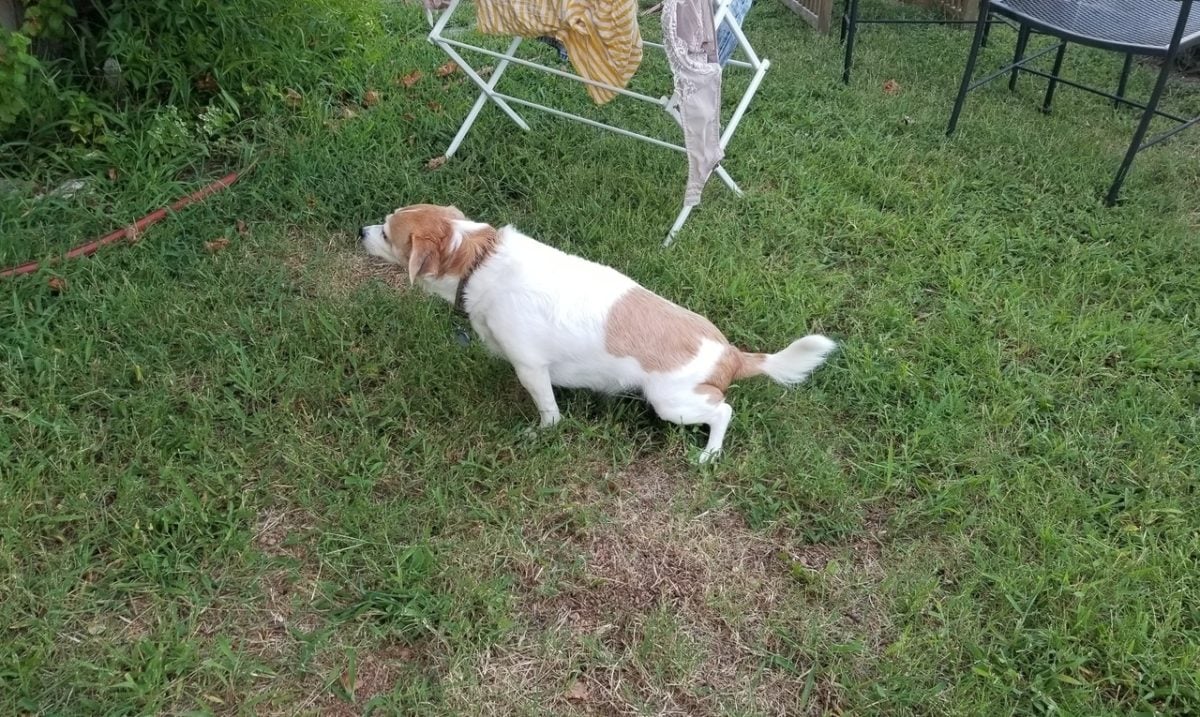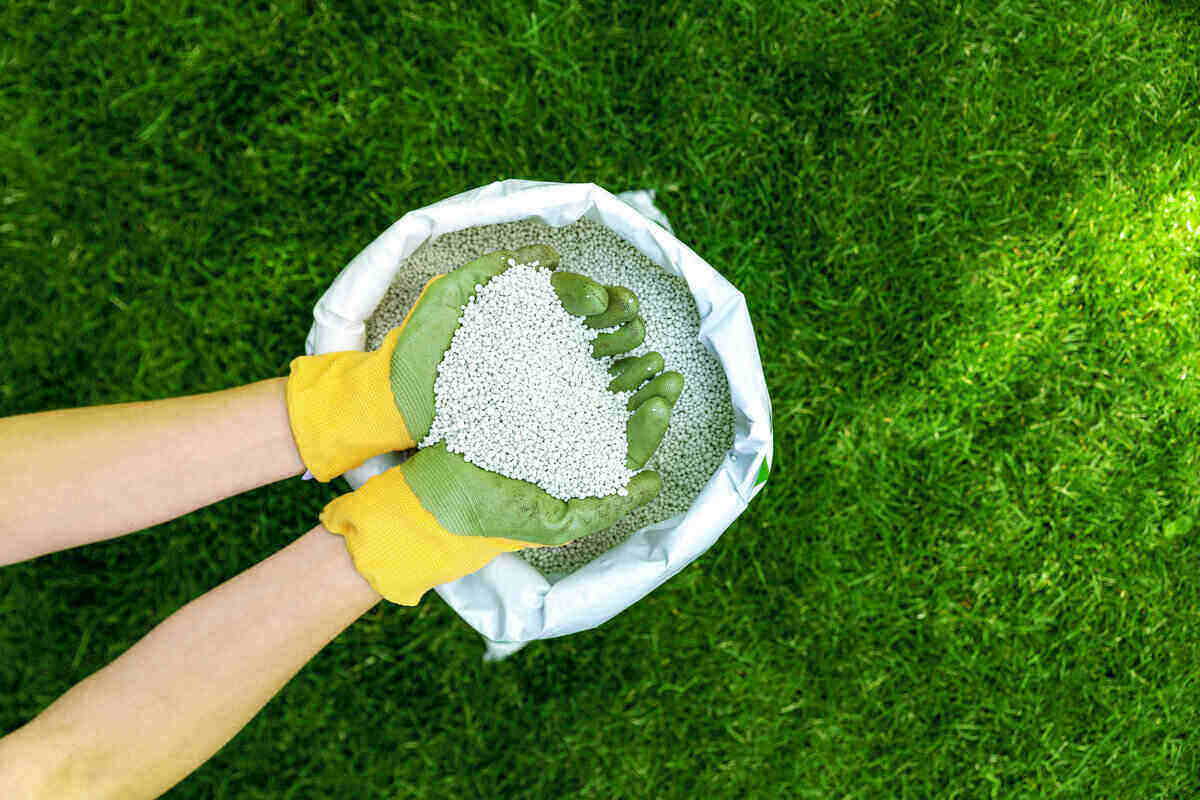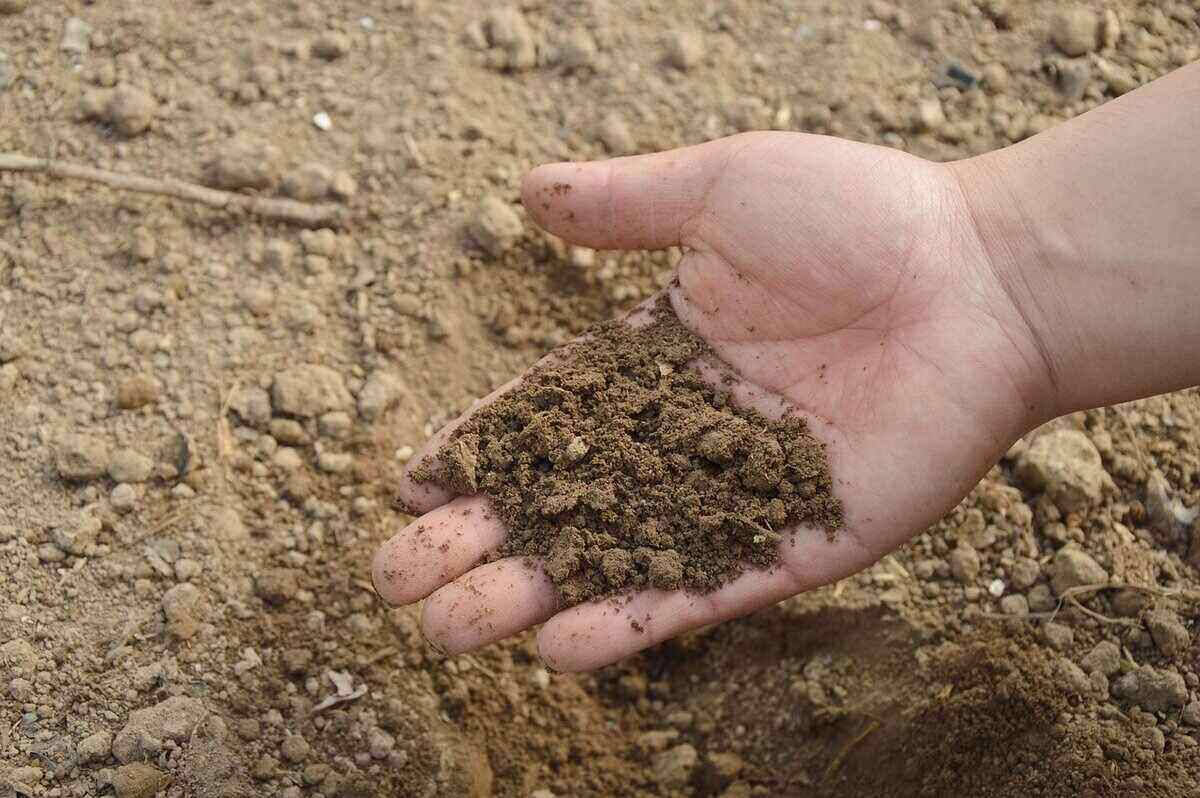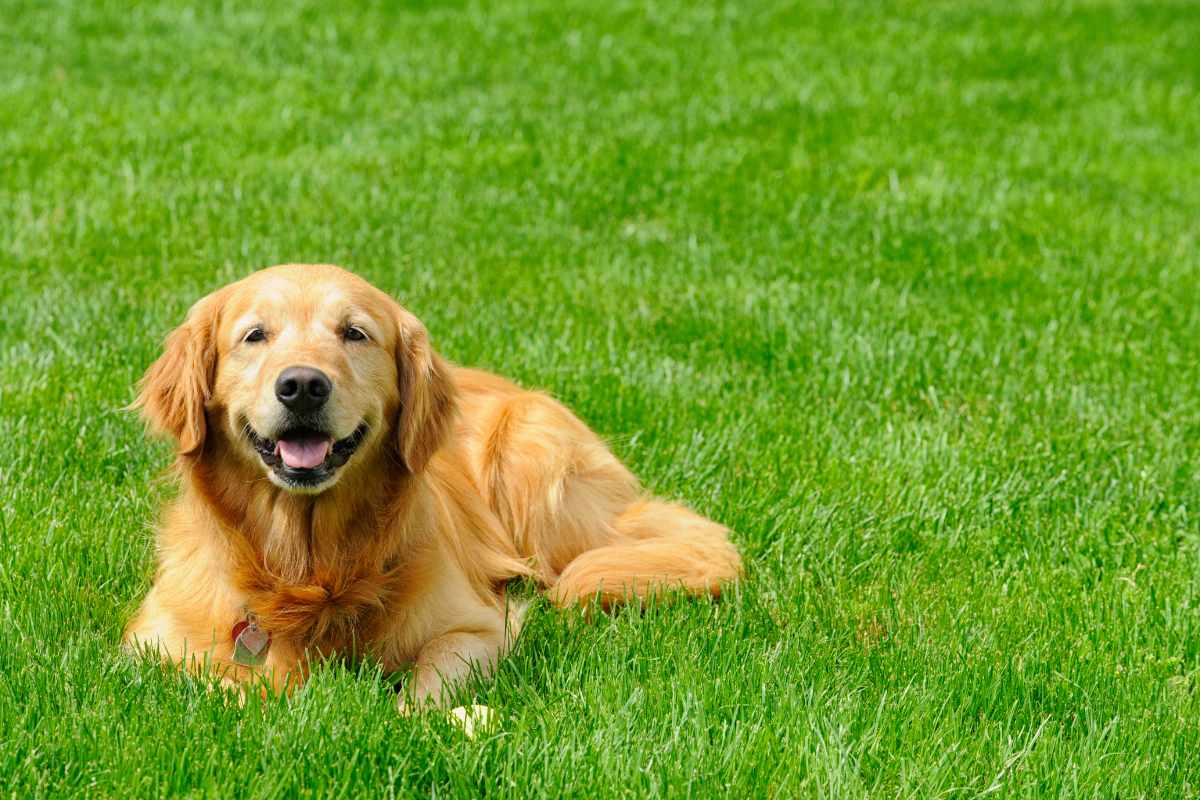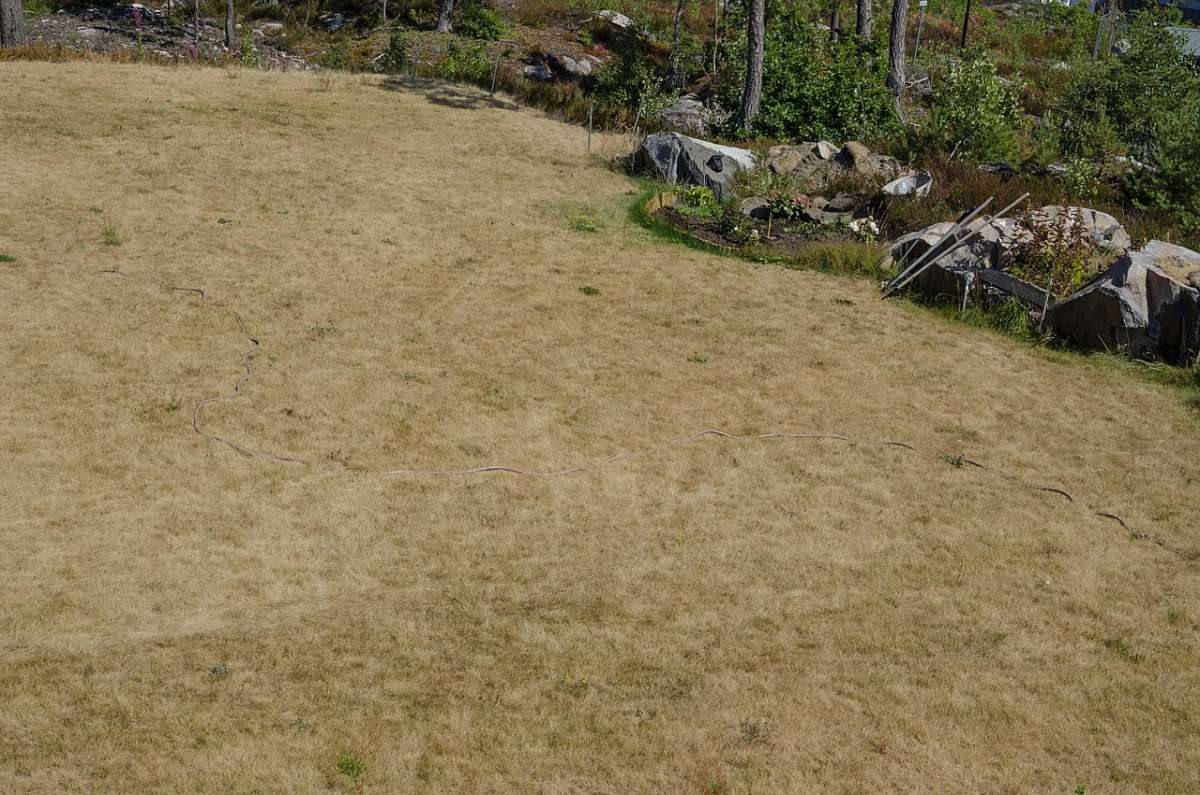
You can’t count down the days for burnt grass recovery like for major holidays. The timeline largely depends on the burn’s cause. Moderately-burnt grass needs about one week to grow back, while heavily-burnt grass takes about one month to reestablish.
The recovery time for burnt grass depends on the type of grass on your lawn and the leading cause of the burn. Grass burns can occur from the misuse of fertilizers, drought, scorching summer heat, dog urine, sloped grounds, and compacted soil. It’s important to understand these causes to determine the right treatment and reestablish a healthy lawn.
How Long Does Burnt Grass Take to Grow Back?
Patience is key when attempting to recover burnt grass. The cause of burn and the type of grass aren’t the only factors to consider in your turf’s recovery time. You’ll also need to consider the severity of the damage before choosing the right treatment, which we’ll cover in an upcoming section. The two possible scenarios to consider are:
Moderately Burnt Grass
Overall, you can revive moderately burnt grass in about one week. One example of a moderate grass burn is when an unexpected heat wave or drought hits your area. If you live in one of the northern states where cool-season grasses dominate lawns, they could be forced into dormancy and appear dead (learn about the differences in our guide on dormant vs. dead grass).
Another cause is overfertilizing or applying the wrong type altogether. The grass blades will appear brown at the tips.
Generally speaking, thorough watering will dilute the excess fertilizer – especially in overlapped areas – and restore your lawn’s vibrant green color. It will also replenish the lawn after a drought or heat period. Here’s a guide on the best time to water your lawn in hot weather. If you feel like your lawn has lost its thickness, you can overseed and continue watering to encourage new grass growth (follow our overseeding guide for more information).
Severely Burnt Grass
Grass that is severely burnt requires a lot more work, and may be restored in about one month. Unfortunately, some vulnerable grass species simply cannot recover from severe fertilizer or heat burns. They will be so badly burnt that even the roots will die, rendering any revival method useless. Vulnerable grasses include those with very low tolerance for heat and drought, such as perennial ryegrass.
Even if the roots are still alive, thorough watering may not be enough to re-establish a green turf. You may need to rake out the dead grass blades, remove topsoil that contains non-dilutable fertilizer, and reseed to encourage new growth.
But what causes a moderately- or severely-burned grass? Is it just a matter of bad luck, or a matter of improper maintenance? The following section will expand on the main causes of burnt grass.
Burnt Grass: Understanding the Cause
Learning why your lawn’s appearance is ruined with burnt patches is essential to successfully reverse the damage. Let’s start with the excess or improper use of fertilizers:
Improper Use of Fertilizer

Fertilizer is like food for your lawn, but overeating can cause problems such as fertilizer burn. Fertilizers contain salts that release beneficial nutrients for your grass. High amounts of salts will surround the grass roots, resulting in improper water absorption. Your grass will go thirsty and eventually show signs of dehydration, especially dead brown patches.
Excess fertilization can occur in two ways: overlapping and improper dosage. Overlapping is adding another layer of fertilizer on top of an area you’ve already covered. In other words, you’ll be adding twice the amount required over specific patches of your lawn.
Improper dosage is when the concentration of fertilizer is too high for water to dilute. This is mainly caused by the lack of or wrong calculation. To avoid such errors, here’s a guide on how to fertilize your lawn.
Burns may also occur from applying fertilizer at the wrong time. It’s best to fertilize cool-season grasses in early spring or late fall. Applying fertilizer to lawns with warm-season grasses should start in mid to late spring or summer. To learn more about this, here’s a guide on when to fertilize your lawn.
What does fertilizer burn look like? If your lawn is suffering from fertilizer burn, you’ll notice one of the following signs:
- Lack of new grass growth
- Strips of brownish-yellow grass
- Checkerboard-like shapes resulting from overlapping
- Grass blades lose their vibrant green color
- Lush green rings around the burnt area. These form when the excess fertilizer has been diluted and feeds the surrounding blades.
Read our guide on fertilizer burn for more information.
Extreme Heat and Drought
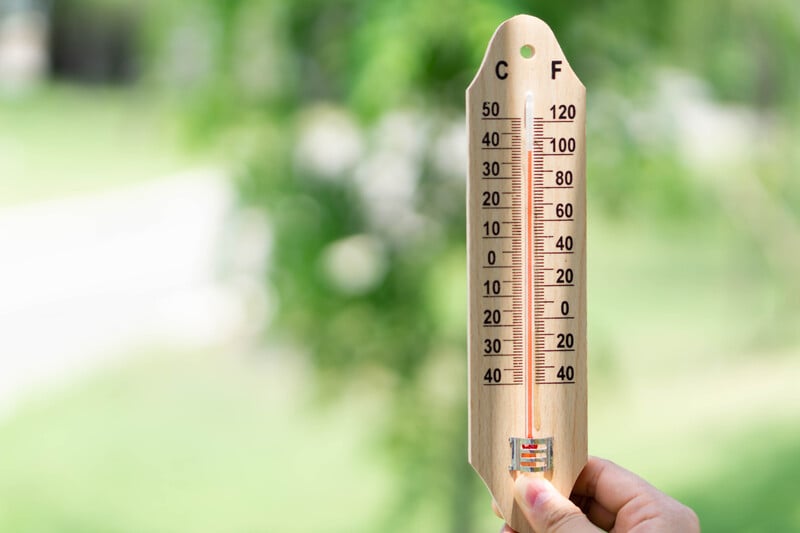
Warm-season grasses are moderately- to highly-tolerant of hot summers and average periods of drought. During periods of exceptionally high temperatures, the grass blades will enter a period of heat dormancy without getting burnt. This is how warm-season grasses adapt and turn brownish-yellow in color, tricking you into thinking they’re damaged beyond repair. The grass roots below the surface will survive and hold out until normal temperatures return.
After continuous watering, the vibrant green color of warm-season grasses should return by late spring or early fall.
In contrast, cool-season grasses cannot tolerate rainless months or extreme heat as much as their warm-season counterparts. Under such conditions, most cool-season grasses could get burnt, sometimes beyond recovery. For grasses with low heat tolerance such as perennial ryegrass, prolonged periods of dormancy could cause them to die.
If you live in an area prone to droughts, here are the top 10 drought-tolerant grasses for your yard.
What do grass burns from heat or drought look like? You will mainly notice patches of yellowish-brown grass that have lost their natural green color. There won’t be lush green rings forming around the dull-looking patches like with overfertilization. For warm-season grasses that are naturally dormant, the roots will remain healthy while the blades appear brown and dry.
Compacted Soil
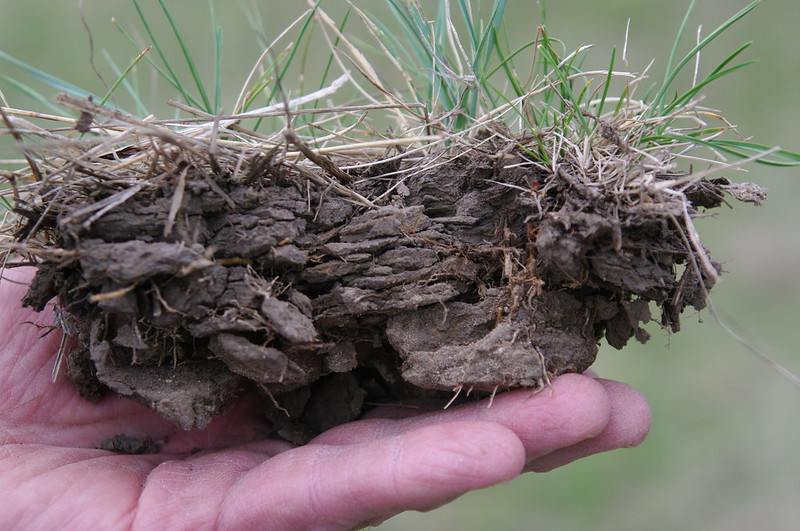
When the lawn soil is compacted, very limited amounts of water and nutrients will reach the grass roots. The starved and thirsty grass blades will struggle to grow, getting burnt in the process and turning brown or yellow. Aeration is the best method in countering soil compaction, creating holes that allow more water and nutrients to penetrate the soil.
Sloped Ground
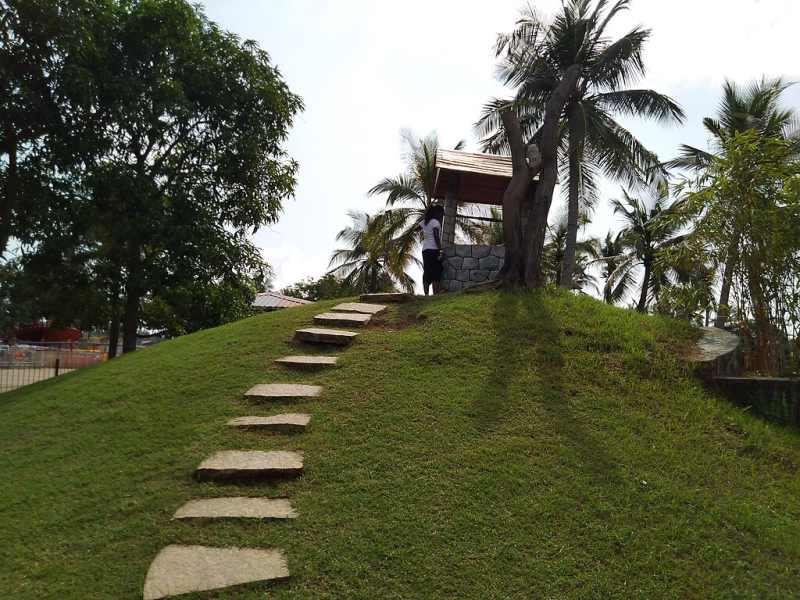
If your turf is lying on a sloped ground, then water may run off before getting absorbed by the roots. Lots of sun exposure and little water absorption will most likely lead to a scorched lawn. Core aeration pulls out soil plugs and helps reduce water runoff, countering the effects of the sloped ground. Here’s a quick guide to core aeration to get you started.
Dog Urine
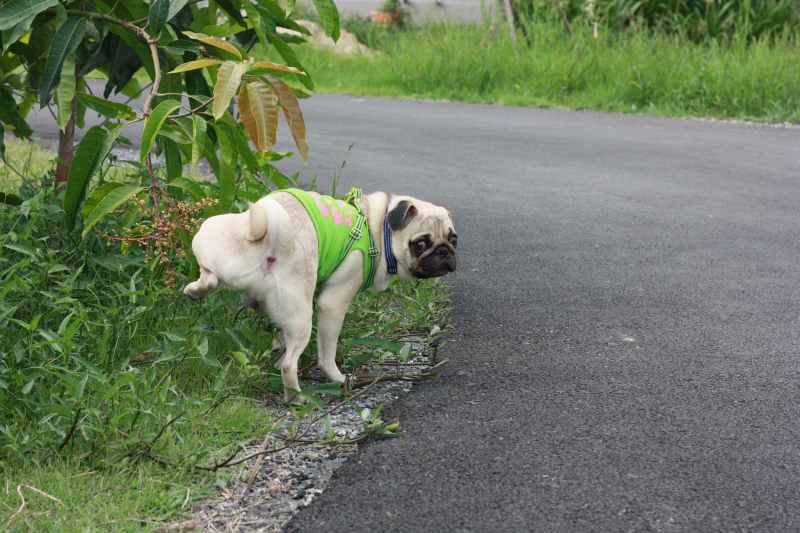
When your dog has got to go number one in your lawn, there’s little you can do to stop it. But what you should do is water over your dog’s toilet area to avoid grass burns, especially during the summer months. But why is that? Urine water evaporates and leaves a large concentration of nitrogen on that patch of grass. Proper amounts of nitrogen are good for nourishing grasses, but excessive amounts can attract pests or cause lawn diseases.
Water is the best element to neutralize the dog urine’s effect on your grass. If kept unchecked, you’ll notice patches of dull-looking grass with a lush green ring surrounding it, which are the healthy grass blades. The signs may be similar to that of overfertilization.
If you need more information, we wrote a whole guide on why dog pee kills grass and how to fix it.
How to Restore Burnt Grass
The ideal time for restoring warm-season grasses is spring. As for scorched lawns with cool-season grasses, the fall is the best time to restore them. Small patches with moderate burns can be brought to life with proper watering and fertilizers. Large patches with severe burns will require breaking up the soil surface with a rake and reseeding to establish a new turf.
For moderate grass burns, here are the steps for restoration:
- Step 1: Water the lawn thoroughly. The lack of water is one of the main causes of brown, burnt lawns. Consider installing an automatic sprinkler system, which is the most efficient way to water your lawn. On average, installing a sprinkler system costs $3,270.
- Step 2: Apply fertilizer. It’s best to apply fertilizer rich in potassium to improve the efficiency of water absorption. Keep watering the lawn thoroughly after fertilizing so that the nutrients reach the roots.
- Step 3: Reduce mowing. Cut back on mowing during the hot dry months. Less sunlight penetrating the soil means less water evaporation.
- Step 4: Reseed the lawn if needed. This step is only relevant after fertilizer burn. After thorough watering, check to see if your lawn looks a little thin. If so, reseed the lawn and continue watering to encourage growth.
For severe grass burns with dead roots, here’s what you need to do:
- Step 1: Prep the area. Use a rake and shovel to remove the dead grass. If the cause was fertilizer burn, it’s best to remove about one-inch of soil that may still contain high amounts of fertilizer. Replace with new topsoil and level the ground before moving on to the next step.
- Step 2: Spread new grass seeds over the fresh topsoil. Depending on your local climate, learn the best time to plant grass seed.
- Step 3: Water thoroughly. Keep the newly-seeded area watered until new grass is established.
- Step 4: Refrain from mowing. After reseeding the lawn, it’s best to let the new grass seeds grow until they reach the same height as the established grass.
- Step 5: Add protection. You can cover the seeded area with hay or topsoil to protect it from rain and erosion.
Can You Prevent Burnt Grass?
In short, yes. There are effective measures to protect your grass from burns.
- Do not use too much or the wrong type of fertilizer. Fast-spreading fertilizers are often toxic and more likely to cause fertilizer burn. Proper fertilization will keep you from burning the grass and ruining your lawn’s aesthetics.
- Heat burns may be nature’s fault, but you can still prepare your lawn for the summer. Before summer arrives, stop cutting your grass too short or too frequently. This will reduce water evaporation and maintain moisture in the soil. Secondly, get your lawn used to rainless weeks by watering more thoroughly and less frequently. Thirdly, avoid using nitrogen-rich fertilizers until the weather cools down. They’re known to reduce the grass’s tolerance for heat.
- As for turfs on a sloped ground, they need to be aerated to prevent water runoff and ensure the roots get plenty to drink. Aeration will also counter soil compaction and help water (and nutrients) penetrate the soil effectively.
- Finally, grass burns resulting from dog urine are the easiest case to prevent. Just be sure to water over your dog’s toilet area to prevent green rings forming around a dead-looking patch.
FAQ About Burnt Grass
What are other causes of brown spots on your grass?
Your lawn can have brown spots for other reasons than grass burns. Dull-looking patches can result from one of the following:
- Poor soil pH levels
- Pests
- Fungal disease
- Chemical spill
- Improper mowing
- Thatch build-up
- Thinning turf
To learn more about the causes of dying turf, here’s an in-depth article on why your lawn has brown spots.
Can you use fertilizer when overseeding your lawn?
Yes, you can use starter fertilizer when overseeding patches in an established lawn. This will give the new seeds a major boost and help them grow quickly to match the established grass heights.
Can powered garden tools cause grass burns?
They certainly can. Powered garden tools such as grass trimmers or weed cutters will get hot after heavy usage. They can burn your healthy grass and leave behind straw-colored marks.
Simplify Your Life and Hire a Pro
Raking out dead grass, removing topsoil, and overseeding can sound like a lot of work. Small patches of moderate grass burns can easily be restored by thorough watering, but severe burns require a lot more work to restore your green lawn. So why go through all the hassle yourself? Hire a local lawn care professional to rescue your lawn and restore its lush, green appearance.
Main Photo Credit: Peulle / Wikimedia Commons / CC BY-SA 4.0
